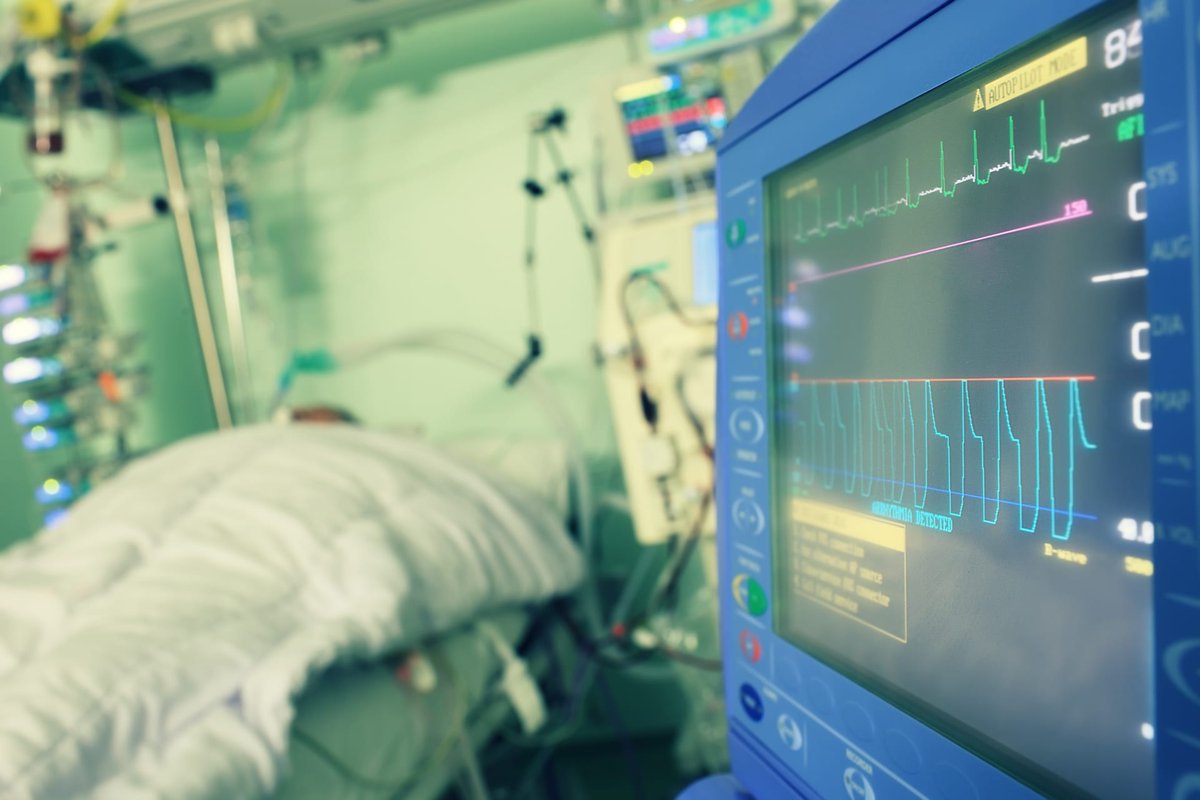
A widespread intervention in critical care over the past 20 years has been the use of induced hypothermia post cardiac arrest
➡️ A thread......
1/24
➡️ A thread......
1/24

➡️ Medically induced hypothermia goes back 5000 years
➡️ The oldest known trauma writings, the Edwin Smith Papyrus (1600 BCE), describes how the Egyptian physician Imhotep (2780 BCE) used localised cooling to treat noninfectious chest blisters
(10.3171/2017.10.JNS171282)
2/24
➡️ The oldest known trauma writings, the Edwin Smith Papyrus (1600 BCE), describes how the Egyptian physician Imhotep (2780 BCE) used localised cooling to treat noninfectious chest blisters
(10.3171/2017.10.JNS171282)
2/24

➡️ Almost 2500 years after the teachings of Imhotep were originally recorded, Hippocrates noted how hypothermia, from the use of snow, seemed to decrease traumatic haemorrhage and advocated its use
(10.1111/nyas.14676)
3/24
(10.1111/nyas.14676)
3/24

In the early 18th century, Baron Domineque Jean Larrey, a surgeon in Napoleon's arm, & credited with the first horse drawn ambulance, noticed how hypothermic soldiers
➡️ bled less
➡️ complained less
➡️ less susceptible to the development of gangrene
(10.1111/nyas.14676)
4/24
➡️ bled less
➡️ complained less
➡️ less susceptible to the development of gangrene
(10.1111/nyas.14676)
4/24

➡️ The use of hypothermia for neuroprotection gained momentum in 1600 and 1700s
➡️ In 1650, a 22 year old called Anne Greene was sentenced to death by hanging for infanticide
➡️ The punishment was enacted on a cold day, thought to be below 0C
(10.3171/2017.10.JNS171282)
5/24
➡️ In 1650, a 22 year old called Anne Greene was sentenced to death by hanging for infanticide
➡️ The punishment was enacted on a cold day, thought to be below 0C
(10.3171/2017.10.JNS171282)
5/24

➡️ Despite apparently dying, when her coffin was opened to allow Oxford University medical students the opportunity to perform a dissection for their studies, the young woman showed signs of life
➡️ She was rewarmed, survived, and granted a pardon
(en.wikipedia.org/wiki/Anne_Gree…)
6/24
➡️ She was rewarmed, survived, and granted a pardon
(en.wikipedia.org/wiki/Anne_Gree…)
6/24

➡️ Scottish surgeon John Hunter (1728-93), reputedly on whom Dr Dolittle was based, was fascinated with death
➡️ He investigated states of suspended animation to better understand life & repeatedly froze animals with the aim of reviving them
(10.3171/2017.10.JNS171282)
7/24
➡️ He investigated states of suspended animation to better understand life & repeatedly froze animals with the aim of reviving them
(10.3171/2017.10.JNS171282)
7/24

➡️ Hunter felt if an individual was hypothermic and without organ damage, recovery was possible
➡️ He proposed the modern concepts of resuscitation over 200 years ago - ventilation with bellows, ideally with oxygen, electrical shocks to restart the heart, & slow rewarming
8/24
➡️ He proposed the modern concepts of resuscitation over 200 years ago - ventilation with bellows, ideally with oxygen, electrical shocks to restart the heart, & slow rewarming
8/24

➡️ Modern evidence for neuroprotection with hypothermia came in 1954 in dog experiments by Rosomoff & Holaday
➡️ There was a linear reduction in cerebral oxygen consumption with increasing hypothermia, reaching threefold reduction at 26°C
(10.1152/ajplegacy.1954.179.1.85)
9/24
➡️ There was a linear reduction in cerebral oxygen consumption with increasing hypothermia, reaching threefold reduction at 26°C
(10.1152/ajplegacy.1954.179.1.85)
9/24

➡️ In a notable report in 1958, Williams & Spencer described the use of hypothermia in 4 patients post cardiac arrest
➡️ Despite initially poor neurology, 3 survived with good neurological outcome
➡️ The 4th also recovered with just residual visual impairment
(PMC1450838)
10/24
➡️ Despite initially poor neurology, 3 survived with good neurological outcome
➡️ The 4th also recovered with just residual visual impairment
(PMC1450838)
10/24

➡️ The first non-randomised human study of induced hypothermia post cardiac arrest was in 1959
➡️ Of 12 patients cooled to 31–32°C for up to 8 days, 6 survived
➡️ Of 7 patients not cooled, just 1 survived
(pubmed.ncbi.nlm.nih.gov/13798997)
11/24
➡️ Of 12 patients cooled to 31–32°C for up to 8 days, 6 survived
➡️ Of 7 patients not cooled, just 1 survived
(pubmed.ncbi.nlm.nih.gov/13798997)
11/24

➡️ Reported mechanisms of neuroprotection include less ischaemia-reperfusion injury, due to reduced free radical production, excitatory amino acid release, & calcium shifts
➡️ Mild hypothermia may not have a major effect on CMRO2
(10.1161/01.CIR.0000079019.02601.90)
12/24
➡️ Mild hypothermia may not have a major effect on CMRO2
(10.1161/01.CIR.0000079019.02601.90)
12/24

➡️ On February 21st, 2002, the modern era of induced hypothermia for neuroprotection post cardiac arrest began,
➡️ Two small RCTs investigating cooling post out-of-hospital cardiac arrest (OHCA) were published in the same edition of the New England Journal of Medicine
13/24
➡️ Two small RCTs investigating cooling post out-of-hospital cardiac arrest (OHCA) were published in the same edition of the New England Journal of Medicine
13/24

➡️ The Austrian HACA trial reported an increase in survival with favourable neurological outcome (55% vs 39%; P=0.009) in 275 patients with out-of-hospital cardiac arrest managed at 32-34°C vs normothermia
(10.1056/NEJMoa012689)
14/24
(10.1056/NEJMoa012689)
14/24

➡️ A smaller Australian trial of 77 patients reported a similar benefit (49% vs 26%; P=0.046), when again managed at 33°C vs normothermia (37°C).
(10.1056/NEJMoa003289)
15/24
(10.1056/NEJMoa003289)
15/24

➡️ Therapeutic hypothermia was introduced worldwide after the reporting of these trials
➡️ However, a subsequent systematic review revealed these two trials were:
➡️ at risk of bias
➡️ of low quality
➡️ more research was needed
(10.1016/j.ijcard.2010.06.008)
16/24
➡️ However, a subsequent systematic review revealed these two trials were:
➡️ at risk of bias
➡️ of low quality
➡️ more research was needed
(10.1016/j.ijcard.2010.06.008)
16/24

➡️ In 2013, The TTM trial advanced the field when reporting similar outcomes in 950 patients with OHCA when managed at two levels of mild hypothermia - 33°C or 36°C
➡️ 6 month mortality was similar - 50% (33°C) vs 48% (36°C); P = 0.51
(10.1016/j.ijcard.2010.06.008)
17/24
➡️ 6 month mortality was similar - 50% (33°C) vs 48% (36°C); P = 0.51
(10.1016/j.ijcard.2010.06.008)
17/24

Further studies evaluated cooling
➡️ cold fluids intra-arrest (harmful)
➡️ localised intra-arrest cooling with a nasal device (may be beneficial)
➡️ endovascular cooling (similar to surface cooling)
➡️ longer periods of cooling (no difference)
criticalcarereviews.com/trials/resusci…
18/24
➡️ cold fluids intra-arrest (harmful)
➡️ localised intra-arrest cooling with a nasal device (may be beneficial)
➡️ endovascular cooling (similar to surface cooling)
➡️ longer periods of cooling (no difference)
criticalcarereviews.com/trials/resusci…
18/24

➡️ The original Austrian & Australian trials were in patients with shockable rhythms
➡️ Would patients with non-shockable rhythms benefit from cooling?
➡️ The French HYPERION trial in 584 patients reported benefit with hypothermia in this group
(10.1056/NEJMoa1906661)
19/24
➡️ Would patients with non-shockable rhythms benefit from cooling?
➡️ The French HYPERION trial in 584 patients reported benefit with hypothermia in this group
(10.1056/NEJMoa1906661)
19/24

➡️ As the robust TTM trial had demonstrated similar outcomes in patients with OHCA managed at either 33°C or 36°C, focus returned to whether hypothermia is superior to normothermia
20/24
20/24

➡️ The followup TTM2 trial compared hypothermia (33°C) with normothermia (<37.5°C) in 1900 patients with OHCA
➡️ There was no difference in 6 month mortality (50% vs 48%; P=0.37)
➡️ Interestingly, there was no benefit in those with a non-shockable rhythm
21/24
➡️ There was no difference in 6 month mortality (50% vs 48%; P=0.37)
➡️ Interestingly, there was no benefit in those with a non-shockable rhythm
21/24

➡️ So where are we now with induced hypothermia post cardiac arrest?
➡️ Is hypothermia actually beneficial?
➡️ Or is it the maintenance of normothermia & the concomitant avoidance of potentially harmful pyrexia that mediates a potentially valuable effect?
22/24
➡️ Is hypothermia actually beneficial?
➡️ Or is it the maintenance of normothermia & the concomitant avoidance of potentially harmful pyrexia that mediates a potentially valuable effect?
22/24

Come to #CCR22
➡️ to hear chief investigator @nielsen_niklas present & discuss TTM2
➡️ to learn about plans for the TTM3 trial, the latest chapter in this ancient story of therapeutic hypothermia
criticalcarereviews.com/meetings/ccr22
23/24
➡️ to hear chief investigator @nielsen_niklas present & discuss TTM2
➡️ to learn about plans for the TTM3 trial, the latest chapter in this ancient story of therapeutic hypothermia
criticalcarereviews.com/meetings/ccr22
23/24
@nielsen_niklas Images from wikipedia & shutterstock
CCR22 is supported by @VisitBelfast @belfastcc @TourismNIreland @norsomedical @MyIntensiveCare
24/24
CCR22 is supported by @VisitBelfast @belfastcc @TourismNIreland @norsomedical @MyIntensiveCare
24/24

• • •
Missing some Tweet in this thread? You can try to
force a refresh








